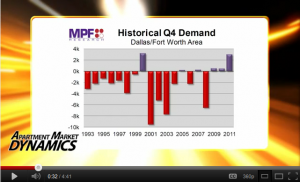I believe that apartment building investment should be a core holding for every successful conservative investor. Briefly here are the top ten reasons for low risk investors:
1. Monthly Income. Properly acquired apartments generate monthly checks in 6-8% or higher annual cash on cash returns.
2. Straight forward, conservative investment strategy. Buying existing apartment buildings with good due diligence means that you know what you’re getting going into the investment. Apartments are not subject to sudden changes in investor sentiment and/or valuations.
3. The numbers determine the value. Apartments are valued based on rents less expenses (Net Operating Income) and increases in rents can go straight to the bottom line increasing the value.
4. Inflation protection. Rents rise with inflation and with 12 month leases every year there is the opportunity to adjust rates. With fixed rate financing your income goes up while your biggest cost stays the same. Continue reading Top Ten Reasons To Own Apartments Now

